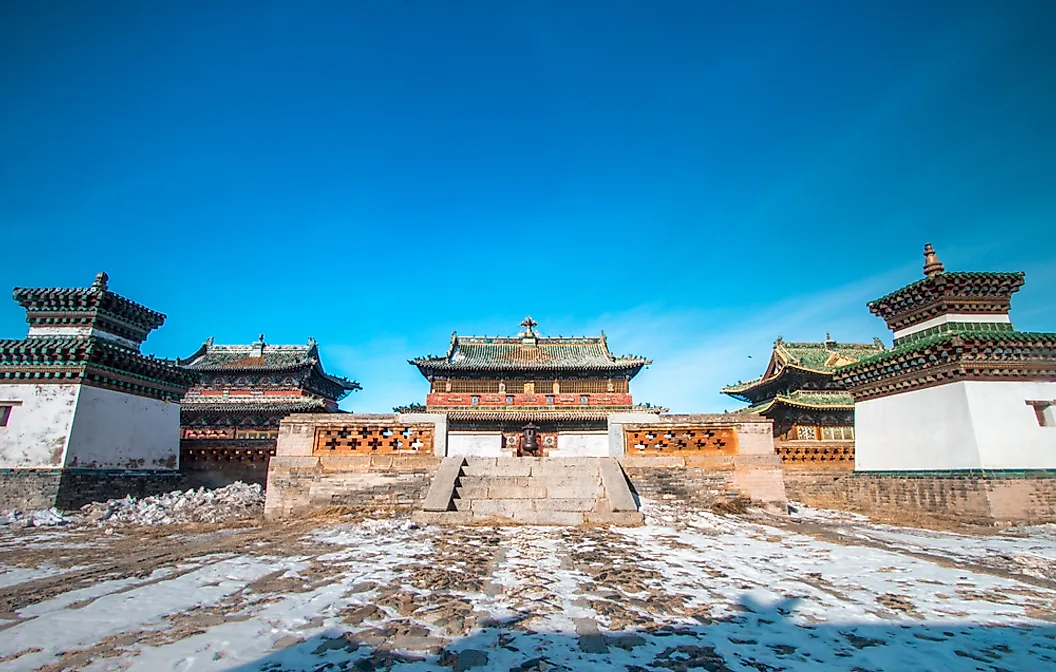From the Middle East to the inner western provinces of Imperial China, the Silk Road was always an important set of routes that connected the west to the east. Plenty of cities dot the landscape, each with their own arguable importance. However, in the days of the biggest land empire in all of history – one of these cities was the very capital of which the Great Khan himself ruled from. From the city of Karakorum, the Great Khan of the Mongol Empire ruled over the massive empire that encompassed the vast majority of what are considered areas belonging to the Silk Road. However, knowledge about the city itself was very limited due to lack of travelers journeying to the city specifically. Things would change when the Franciscan Friar William of Rubruck traveled along the Silk Road as an emissary to the Great Khan Mongke in 1253. It is from his account that most of the information known about Karakorum is specifically derived from.
Karakorum itself is located along the Central Asian Steppe, perhaps the closest city that once stood close to Chang’an. However, Karakorum itself did not come about until the reign of Chinggis Khan’s third son, Ogedei Khan – who succeeded the throne of the Great Khan in 1229. The following must be considered, however: “The city was first walled by Ogedei in 1235, through Chingiz Khan seems previously to have used the site as a base camp”.[1] Originally it was a small site used as a ground for Chinggis Khan to plan out his campaigns. However, Ogedei expanded it to at least make his seat of power much more elaborate, regal, and bigger. Though, it should be noted that the city itself was not bigger because of the Mongols being nomadic horsemen and not like their Chinese neighbors who made city-living their entire life. Information regarding earlier Karakorum is scarce, though the first recordings of it came from William of Rubruck. As noted by Rubruck: “The one I saw at Caracorum was the size of a representation of St. Christopher; and I was told by a Nestorian priest who had come from Cataia that the country contains an idol so large that it is visible at two days’ distance”.[2] It should be noted that Caracorum itself possessed plentiful religious structures, only one of them however was a Church. There were Buddhist monasteries, a few Islamic mosques, a Nestorian church, and plentiful temples dedicated to the Sky Father Tengri. Karakorum was clearly a place of religious exchange, considering the Mongols’ own reputable tolerance for various faiths.
Unfortunately for Karakorum, its usage by the Mongols would not last forever. It thus explains as to why the city itself is mere ruins, and not quite still in use. After the death of Mongke Khan, the Mongol Empire broke apart after the Golden Horde, Ilkhanate, Chagatai Khanate, and Yuan Dynasty selected their new Khans. Unlike his predecessors in Ogedei, Guyuk, and Mongke – Khubilai Khan had different ideas pertaining to a capital city. Primarily, because Khubilai found advantages in assimilating into Chinese culture: “At first, the ruler there, Khubilai Khan (reigned 1260-94), chose as his capital the city of Shangdu, in Inner Mongolia, 17 miles (28 km) northwest of the modern city of Duolun, but in 1266 he transferred his capital to Beijing….”.[3] After Mongke’s death and Khubilai’s ascension to the throne – Karakorum would thus be abandoned. Even long after the Mongol Empire, a capital city for the land of Mongolia would be constructed – Ulaanbaatar. If one looks at the city itself, one can still see that the construction was very similar to that of Karakorum. However, the ruins of Karakorum are still found in modern day Mongolia – close to the city of Kharkorin. Despite its now-forgotten usage, Karakorum remained an integral part of the Silk Road during the reign of the Mongol Empire.

This is the monastery of Erdeni Dzu, which was built centuries long after the Mongol Empire's collapse. It originally served as a gathering temple for Buddhists to worship, but has since become a museum in the present.[2]
[1] This was the first time that truly any steppe peoples created a city from scratch that endured for a long period of time. Ogedei most likely received this idea from the Chinese dynasties of the Jin, Xi Xia, and the Song. Ironically, the Jin dynasty were made up of former nomads known as the Jurchens, and the Xi Xia was a dynasty established by another steppe tribe known as the Tangguts.
[2] Karakorum embodied the religious tolerance that the Mongols had for their various subjects. At one point, he also does explore a Buddhist monastery while the disciples are in deep meditation. Furthermore, the Khan of this time, Mongke - also has his court filled with religious leaders such as imams, monks, gurus, etc. The only religious group that appeared to be absent from Karakorum completely were Hindus, as no sight of a guru or rishi was recorded here.
[3] Each time, the Mongols had a habit of changing their prime palace location or ruling city from one place to another. The Khans that had Karakorum as their capitals included Ogedei, Guyuk, and Mongke being the last. There are no records noted that showed Khubilai ever visiting Karakorum after it was left behind, as instead he embraced his newfound power over China.
Jackson, P. and Morgan, D., 1990. The mission of Friar William of Rubruck: His journey to the court of the Great Khan Mongke, 1253-1255. London: Hakluyt Society.
Morgan, D., 2008. The Mongols. 2nd ed. Malden, Mass.: Blackwell.
Hansen, V., 2017. The Silk Road. New York City: Oxford University Press.